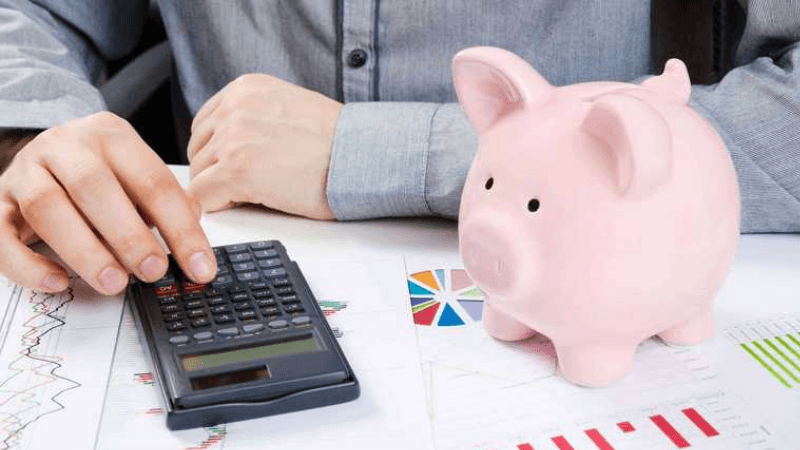
One of the healthiest habits we can adopt is to keep track of our expenses and savings. To do this, it is essential to have an effective personal budget tailored to our needs. With this guide, you can learn how to create your own budget in a simple and effective way.
Introduction
Creating a personal budget may seem like a daunting task, but it is essential to gain control over your finances and achieve your long-term financial goals. This article will guide you step-by-step through the process of creating an effective budget tailored to your needs, from assessing your current expenses to creating a savings and investment plan. Read on to discover how you can significantly improve your financial situation with a well-planned budget.
Step 1: Identify your income
The first thing you must do to create an effective personal budget is to identify your income. This includes all sources of regular income, such as your salary, rental income, or income from side activities.
If you have a steady job, it's easy to determine your monthly or weekly salary. But if you have variable income or are self-employed, you will need to estimate your average income.
Be sure to include all income in your budget, even if it's small. The sum total will give you a clear idea of how much money you have available each month. Once you've identified your income, it's time to move on to the next step and analyze your expenses.
Step 2: Make a list of your monthly expenses
The second step to creating an effective personal budget is to make a detailed list of all your monthly expenses. This includes all fixed expenses such as rent or mortgage, utilities, transportation and loan payments. You should also include all variable expenses such as food, clothing, entertainment and others.
It is important to be honest with yourself during this process and make sure you are considering all the expenses you have in a month. You can review your bank and credit card statements to help you remember all of your recent expenses.
Once you have made a complete list of your monthly expenses, add up the total. This number will give you a clear idea of how much money you need each month to cover your expenses.
Step 3: Analyze your expenses and reduce unnecessary ones
Once you have established your income and expenses, it is important to thoroughly analyze the latter to determine where you are spending more than necessary and, therefore, identify areas where you can reduce your expenses.
To do this, it is useful to make a detailed list of all your expenses in the previous month and categorize them by type (food, transportation, entertainment, etc.). This way, you will have a more accurate idea of how much money you are spending on each item and evaluate if there are expenses that you could avoid or reduce without affecting your quality of life.
A good starting point to reduce your unnecessary expenses is to identify those that are merely whims or luxuries that you could do without. For example, do you really need to renew your closet every month or could you reuse some clothes? Do you really need to dine out every week or could you cook more at home?
In addition, it is also important to evaluate whether there are cheaper options for the services you regularly use, such as your internet plan or the gym you attend. Similarly, you can look for offers and discounts for the products you buy frequently. Over time you will see how these small changes can add up significantly to your monthly savings.
Step 4: Prioritize your expenses and allocate an amount to each item
Once you have analyzed your income and expenses, it is important to prioritize your spending so that you can effectively allocate an amount to each item.
In general, it is recommended that you allocate a higher percentage of your income to essential expenses, such as housing, utilities, food and transportation. You can then allocate a smaller amount to secondary expenses, such as entertainment, clothing and travel.
It is also important to take into account incidentals and necessary expenses that are not regular, such as home or vehicle repairs. To do this, you can set aside a percentage of your income for an emergency item.
In short, prioritizing your expenses will allow you to allocate an appropriate amount to each item and avoid spending more than you can afford. Remember to constantly review your budget to make adjustments if necessary.
Step 5: Establish a system for tracking your budget
Once you've created your budget, it's important to set up a system to track your spending and make sure you're sticking to your financial plan.
There are several tools for tracking your expenses, from mobile apps to Excel spreadsheets. The important thing is to find an option that suits your needs and allows you to record each of your expenses in a simple and effective way.
In addition, it is advisable to establish a frequency to review your finances and analyze whether you are meeting your budget. You can do it weekly or monthly, depending on the complexity of your expenses and the time you have available.
Remember that constant monitoring of your finances will allow you to identify areas where you can improve and adjust your budget to achieve your long-term financial goals.
Conclusions
In conclusion, creating an effective personal budget tailored to your needs is not a difficult task if you follow the right steps. It is important to determine your income and expenses, set realistic financial goals and reduce unnecessary expenses.
It is also crucial to regularly track your budget to make sure you are on track. Remember that a personal budget can help you take control of your finances, save money to reach your goals and avoid unnecessary debt. Start creating your own personalized budget now and improve your financial situation!






